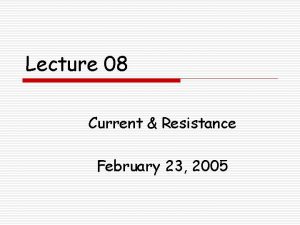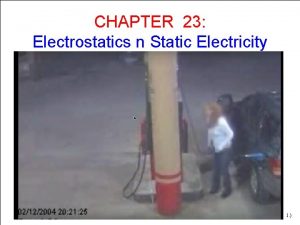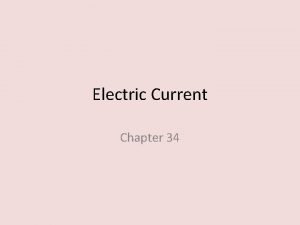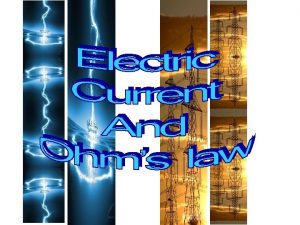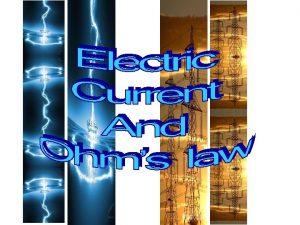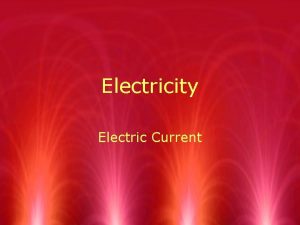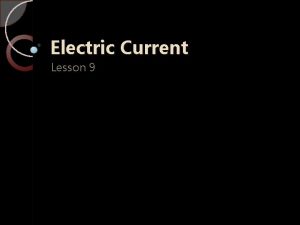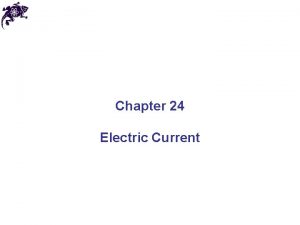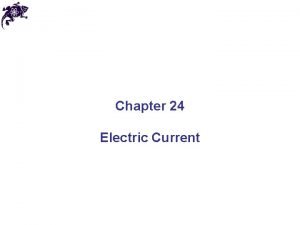Electric Current Chapter 7 section 2 Electric Current







- Slides: 7

Electric Current Chapter 7 section 2

Electric Current l Electric current- The flow of electrons through a wire or any conductor. l l l Measured in units of Amperes (A) Different from static electricity because it lasts longer Charges flow from High voltage to Low voltage Voltage difference- push that causes charges to movemeasured in volts (V) For charges to flow, the wire must always be connected in a closed path, or circuit http: //www. school-for-champions. com/science/dc. htm

Sources of Electricity l A Dry Cell battery produces a voltage difference between its zinc container and its carbon suspension rod, causing current to flow between them.

Sources of Electricity l A Wet Cell battery contains two connected plates made of different metals in a conducting solution- like a car battery l Electrical Outlets- have a voltage difference across the two holes of an electrical outlet and a generator at a power plant provides the voltage difference l Resistance- the tendency for a material to oppose the flow of electrons, changing electrical energy into Thermal energy and light

Electrical Circuits Less resistance means less heat, which is safer for use in your home l Ohm’s law- current in a circuit equals the voltage difference divided by the resistance. l l. I = V/R As resistance increases, current decreases l As voltage difference increases, current increases l

Electrical Circuits l l Series circuit- current has only one loop to flow through Parallel circuit- current has more than one loop to flow through Magnetic fields form around wires through which electricity is moving Electromagnet- a temporary magnet made by placing a piece of iron inside a current-carrying loop of wire l l l More loops = stronger More voltage = stronger Only works for DC current

Resistance All materials have some electrical resistance. l Resistance is measured in Ohms (Ω) l Making wires thinner, longer, or hotter increases the resistance l Ohm’s Law- the current in a circuit equals the voltage difference divided by the resistance I = V/R l
